Our Sumacs are happy. Everywhere you go now they are sporting terminal clusters of garnet-colored berries. It is time to harvest Sumacs for use today or later.
There’s a wide variety of Sumacs. Locally it’s the “Wing Sumac.” In other areas of the country it can be the Staghorn Sumac. Shapes and quality vary but they always have terminal clusters of garnet-colored berries, give or take a hue. The berries have hair on them. And on the hair is malic acid, the acid that makes apples tart. You can rinse off the acid and make a vitamin-C rich “lemonade.” The berries can then be dried, ground, and used as a spice. And in the springs the shoots can be peeled and eaten raw or cooked. If you are worried about Poison Sumac, to the right, it grows only in wet spots, has a much different leaf, and when in fruit has white berries positioned farther down the stem, not terminal clusters. Also Poison Sumac leaves have bright red stems.
Besides the aforementioned Sumac what you should also be finding now are Persimmons and Saw Palmetto berries, just about the opposite on the flavor scale, sublime to you-gotta-be-kidding-me. Saw Palmetto berries ripen about mid-September but stay around for a month or more. They are stong flavored, try only a little. I had a ripe persimmon two weeks ago near Tarpon Springs but they are more an early October fruit. I saw some in Ocala this past weekend that were almost ripe. As for other seasonal forageables in Gainesville near Lake Newnan we found scores of ripe Creeping Cucumbers.
What is or is not edible amongst wild plants is not as settled as one might think. There are at least three plants locally that are … debatable. One is Salvia lyrata, the Lyre-leaf Sage.
In his book Edible Plants of North America, Francois Couplan writes on page 384: “the leaves of the S. lyrata, Eastern North America, contain an acrid principle and should not be ingested. They have been used to remove warts.” That said I know an herbalist who makes a tea from the leaves and a foraging instructor who cooks the young leaves and eats them. I’ve heard other reports of them being eaten. That can leave a person in a tough spot as to what to do with the plant. To eat or not to eat, that is the question.
Another example is also a sage, Salvia coccinea, also known as Tropical Sage. A small piece of the blossom of this species — a very tiny piece, 1/8 inch square — made me horribly sick for several weeks. It attacked my stomach with viciousness and I was go-to-the-emergency room miserable. Coca-cola syrup and Pepto-Bismol combined were my salvation from doubled-over pain. I was actually “field testing” this plant for edibility at the time, one reason why I am very opposed to field testing. Yet, I know of two people who have eaten the young leaves with no problem. Perhaps it was a personal allergy on my part. I don’t know. But I do know I will never eat any part of that plant again. Ever. Lesson painfully learned. Yet it might be edible, or maybe some folks really do have cast iron stomachs. I know I don’t. Eating this sage is one of those “you’re on your own” kind of things.
A third plant that falls into the crack between edible and not edible is Richardia scabra, aka Florida Pusley. It is in a genus that has species used to make you throw up. In fact one is called Richardia emetica. That is not encouraging. Some people mistake R. scabra for chickweed, which is a Stellaria, a totally different genus. The plants vaguely resemble each other if one ignores several details and that fact that real chickweed only grows here in the winter time. R. scabra is a species for which I have never found any ethnobotanical references to regarding edibility. In fact it is one of three common plants that seems to have either not been used by the natives or somehow were not reported. The other two are Amaranthus australis and Hibiscus moscheutos. I know from modern reports that A. australis is edible but as for the H. moscheutos I have no idea though it comes from a very edible genus. Thus R. scabra is not on my site as an edible because I can’t find any historical reference to its use. Yet I know two people who mistook it for chickweed and ate it for quite a while. And I know two people who did not mistake it; they know it is a Richardia and they eat it from time to time. That might be a key element. Without any ethnobotanical reference perhaps a little now and then is okay but a steady diet of it is not. It is one of those unknown things.
Sometimes eating little bits of this or that do not rise to the level of making you ill. I know a person who mistook Oak Leaf Fleabane (Erigeron quercifolius) for for Plantago major and ate some for quite a while without an apparent problem. And I have personally seen someone eat a leaf of Oak Leaf Fleabane against my advice. She was still standing at the end of class. So there are definitely edible plants, and there are definitely non-edible plants. But there can be some fog in between.
Upcoming Foraging Classes: This coming weekend there will be a class in Jacksonville Saturday, and one in Winter Park Sunday. An the next weekend, the 12th and 13th of October I’ll be in West Palm Beach. To learn more click here.
 Trust is a large part of foraging. You trust what you’re taught is accurate and you trust resources to be accurate. You also have to learn to trust your own judgment, perhaps the hardest trust to learn. I don’t know as much about mushrooms as I’d like because of trust. Many years ago I knew a mushroom expert. But, he was so horribly irresponsible in the rest of his life that I just could not bring myself to trust him about mushrooms. He died of causes unrelated to mushrooms so he knew his stuff but then there was that element of trust, or in his case the absolute lack trust. Because of this I came to the identification of mushrooms late in my career. I’ve known a few over the years but I have become a student of them in earnest which is quite enjoyable. I even got a microscope or two to help. So with most mushrooms I am not sharing an expertise as I do with plants but rather my discovery. Do not trust me about mushroom… yet.
Trust is a large part of foraging. You trust what you’re taught is accurate and you trust resources to be accurate. You also have to learn to trust your own judgment, perhaps the hardest trust to learn. I don’t know as much about mushrooms as I’d like because of trust. Many years ago I knew a mushroom expert. But, he was so horribly irresponsible in the rest of his life that I just could not bring myself to trust him about mushrooms. He died of causes unrelated to mushrooms so he knew his stuff but then there was that element of trust, or in his case the absolute lack trust. Because of this I came to the identification of mushrooms late in my career. I’ve known a few over the years but I have become a student of them in earnest which is quite enjoyable. I even got a microscope or two to help. So with most mushrooms I am not sharing an expertise as I do with plants but rather my discovery. Do not trust me about mushroom… yet.
I ran into the same genus of mushroom — Lactaria — twice this past week, Deland and Maitland, and they were quite different. The first was cream-colored and true to the genus name dripped a lot of clear then milk-colored liquid. The liquid quickly turned brown and smelled strongly of fish, or old ham. Supposedly it is an edible but how one gets past the odor I don’t know. The second Lactaria is pictured here. It’s a handsome mushroom and it, too, dripped “milk” but in this case it did not immediately turn dark brown nor did it smell. A little chemical test turned part of its cap olive colored, the spore print was the right color — white — the gills are widely spaced, and it was growing under oaks. If you want to some day learn how to identify mushrooms you first need to learn how to identify some common trees which many fungi have a relationship with. This mushroom is Lactaria hygrophoroides. There is no common name so you have to make peace with botanical names. It is a choice edible but check with a local expert first, and on mushrooms that is not me. Indeed, I did not eat this mushroom. It takes me a while to trust my own judgment with something new.
Language is a fickle thing. A mushroom top that is slimy in English is buttery in Russian. And man has been using blankety blank euphemisms for a long time. Calling something what you want it to be perceived as rather than what it is has also been practiced … hmmm… naming a regular cup of coffee grande comes to mind. Then there are agenda terms, some of which can be funny. Did you know that the creatures pictured above are Emission-Free Mowers? I like goats very much but I would not call them emission-free. (And if I remember correctly, cows are emission-full creatures. See the picture below testing to find out just how much methane the average bossy does produce, and testing her patience.) Goats are being used to consume invasive species, kind of a win-win solution… or wind-wind…. Anyway, one company that takes care of such problems is Vegetation Management Solution, or as I like to think of them: Get-Your-Goat.
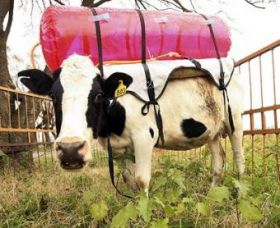

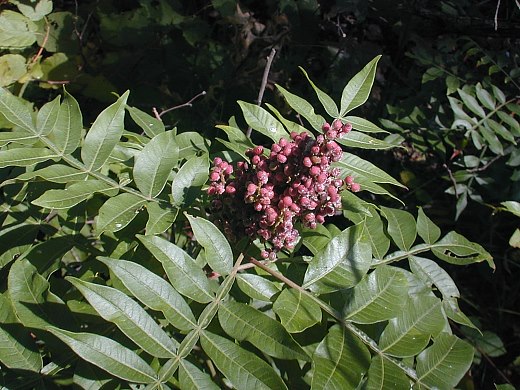
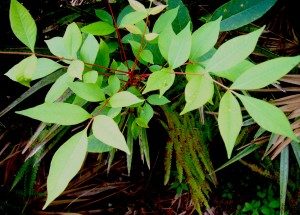
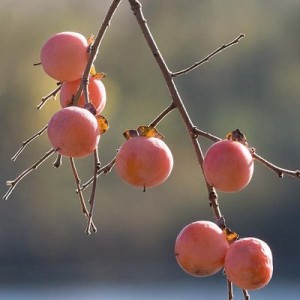
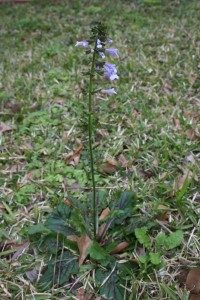
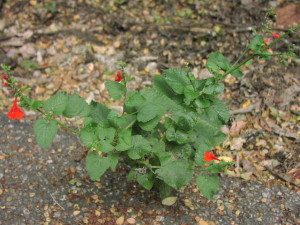
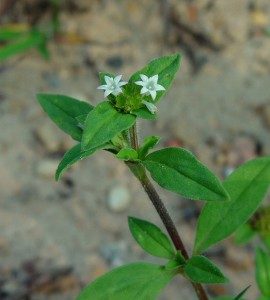
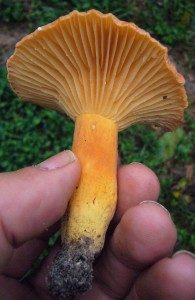
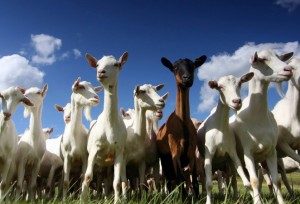

Can you give a report about jhonsongrass and the seed.
Well… it’s a cultivated crop and this site is about wild edibles. However the seeds can be edible but be careful as the plant is known to have cyanide under certain conditions.
I’ve been nibbling on Richardia for most of my life thinking it was chickweed until a “Florida Wild Flowers” book told me what it really was. I wondered for years about it previously and even felt a teeny-tiny bit queezy after eating a handful of leaves, stems, and flower buds raw. In small amounts raw or simmered I’ve never felt any ill effects.
Oh dang! I don’t think Vegetation Management Solution is going to send some goats down to my South Florida yard, but thanks for the link anyway.. I am always on the lookout for a local rent a goat service. Man could I feed up some goats!
Contact them. They might have contacts all over the place. Expansion is good for them and goats.
I thought I had written to you but I must have forgotten. I have recently movrd to Ukraine and amlearning to wild forage here. Many things Ipick I go by gut instinct. So far I have lived to tell the tale! One plant I woiuld like to know about. It grows near the Dnepr River 90 kns downstream of Chernobyl. Yes! I know I shouldn’t have but I did for two weeeks. My husband said the leaves I btought home were young stinging nettles, but I said ‘rubbish’! …they are neither hairy nor do they sting but in all other respects…yes…thet do look like nettles. ..leaf formation and the blooms are small and sir very very close to the stem. Thanks, Jackie
I am glad you gave props to goats. New Englanders have long known the weed whacking benefits of goats. You do have to tie them with a chain or cable (they will chew through any rope). They also fertilize the area while they are trimming it. A win win situation. The milk makes great cheese and you can get the long hair variety for the extra extra side benefit of giving you yarn to knit or weave. Can you tell I am a proponant of goats.
Indeed ” Language” is a fickle thing. I like the picture of”Emission Free Mowers”. It inspired me to write about the following examples which may be conformable with what you have mentioned about LANGUAGE: 1/ Looking at the faces of these beautiful creatures in the picture, I can feel some danger coming soon; thus let me call them “Danger Sensitisers”, 2/ Before the sixties of last century we, people of Khartoum North, used to describe these lovely creatures as “Patience Teachers”. I think most humans are impatient by nature especially when crossing roads during traffic – I must say at that time the number of traffic lights was limited; also goats had to wander about in search of food. It was observed how patient a goat was to wait before crossing while cars were moving. Wonderful they are – teaching people patience, 3/ Personally I’m indebted to these “FFFFF”, 5Fs creatures – they have contributed greatly to my well being especially during infancy. In Kassala – eastern Sudan -where I’ve started life, I used to have my Fresh Full diet For Free ; hence I call them Friends to complete the 5Fs . I missed the letter ” D” as that may also serve the purpose of how fickle is language.